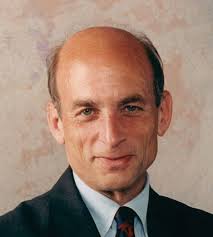Ok, so I went and saw the movie, thanks to my entrepreneurial colleague Christine Hurt, who already has a post up. Read this post for the basics. I plan to follow up with a much longer analysis when I get the time. Here’s some stuff that should suffice for now.
First, the movie stinks. It’s technically proficient, but there is hardly a spark of genius or originality anywhere in the film. [One exception is the 94-year-old Eli Wallach, one of my favorite actors, as Julie Steinhardt. Note also that Jake’s ringtone is The Good, the Bad and the Ugly — I’ll need to work out all the parallels with that film.] MNS is what you get when somebody who knows very little about business sets out to present a morality tale about business: neither informative nor entertaining. By contrast, the motivations, and therefore the results, of the original Wall Street were much more ambitious. Indeed, as I discuss in my analysis of that film, the art ultimately undercut the polemics. Here, there was no dramatic arc, no character development, just caricatures and events concocted to make Stone’s points about finance discussed below.
Second, Stone and his screenwriters basically took just about everything that was in the original, put it in the blender, and poured it out into this movie. The same shots of frenetic New York business and fun, David Byrne back on the soundtrack, the father-child relationships all over the place (as Christine notes), Gekko, Charlie Sheen in a cameo as Bud Fox, even the same NY realtor who sold Bud Fox his apartment, back here buying Jake’s apartment. The difference is the pieces were much more carefully constructed, and original, in the first film.
Third, I’ll cut to the anti-business chase: once again, as discussed in my longer article about business in film, my earlier paper linked above about Wall Street I, and my recent paper about movies and the financial crisis, it’s all about evil financiers. Stone goes through all of the possible narratives of the financial crisis discussed in my most recent paper — individual speculators, business cycles, banks, government or inexplicable economic forces — and finally finds that behind all of it was the evil financier Bretton James, betting against markets, manipulating bailouts. Stone’s trying to convince us that he’s thought of everything and come up in the end with the financier explanation. But by the time we’ve heard all the other possibilities, the evil financier story doesn’t make dramatic or any other kind of sense.
Fourth, both here and in the original Wall Street, Stone wants to make a point about making real things vs. manipulating money, pumping money out of Main Street and into Wall Street. But he has to acknowledge that Wall Street does do good things, like financing new ideas (e.g., nuclear fusion in the film). So then Stone has to sell ordinary people on some subtle difference between good finance that makes things and bad finance that’s only speculation. If a new financial instrument makes it cheaper to make things, is that bad? Is it good until it turns into a bubble? When, exactly, does that happen? He throws in “moral hazard” and a lot of other stuff, but in the end it’s pretty muddled.
But all of this isn’t to say the film is inconsequential. Audiences will come away with the germ of an idea that there is such a thing as bad finance, and it’s ruining the world. Stone punches this story across with nifty photography and lighting, David Byrne’s music, glossy videos of New York, really bad bad guys like Bretton James, really good good guys like Gekko’s daughter Winnie. As I’ve written in the above articles, all of this conditions filmgoers to accept that finance needs to be reined in, even if they don’t know exactly why.
In the film, Jacob defines insanity as “doing things over and over again and expecting a different result.” A nice comment on the film.




